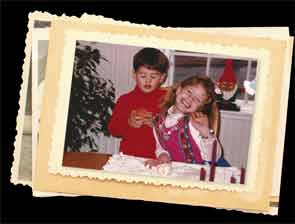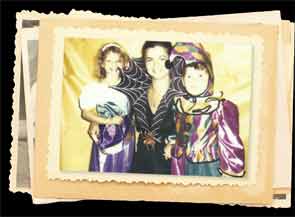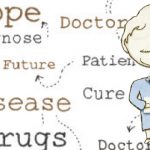
I’ve had juvenile rheumatoid arthritis (JRA) since I was 4 years old. My first symptoms began at age 2, and after countless appointments with a variety of specialists over the course of two years, I received my diagnosis. Because I was diagnosed at such a young age, I have no recollection of my life before JRA. My earliest memories are scattered with pain episodes and disease flares.
That said, I consider myself one of the lucky patients. I grew up very close to Boston, and have had access to many exceptional rheumatologists. After spending some time in rheumatology research, I’ve had the opportunity to learn more about the behind-the-scenes aspects of rheumatology. Various factors have resulted in doctors typically being able to spend only a short amount of time with their patients. That’s incredibly difficult, especially for JRA and other rheumatic diseases, because each case involves unique disease presentation. It seems to be a complex clinical decision-making process, a game of trial and error, guess and check.

1 Rheumatologist Makes a Difference
Despite seeing a handful of doctors throughout my life, one rheumatologist in particular made an everlasting impact on my life. I began seeing her at a very young age and, therefore, don’t necessarily remember any of the details about our appointments, but I do remember what separated her in my mind from my other specialists.
From the very first time she met with a patient, both the child and family could tell she genuinely cared about her patients. Her empathy helped her gain my trust quickly, making me feel comfortable despite typically being in pain during our visits. My extraordinary doctor was so special because she was able to make each appointment count. She was a well-practiced clinician, her skill made obvious by her ability to know what questions to ask about my pain, a vital aspect of successfully managing this guess-and-check disease. She also took the time to involve my parents, but knew when it was appropriate to ask me questions privately, teaching me how to manage my pain on my own. Her focus on autonomous care during my early teenage years, a trait reflecting her developmentally appropriate patient style, helped me learn the invaluable skill of self efficacy with respect to my disease.
Aside from learning the importance of having an empathetic bedside manner, including the entire family system in treatment and mastering the developmental knowledge necessary for treating pediatric patients, one of the most important lessons I’ve learned through both my own experience seeing rheumatologists and my research experience is the importance of treating the whole person. I’ve been fortunate enough to have received fantastic medications that have helped me manage my pain. However, there are aspects of my disease that rheumatologists are not able to help me through.

Being Young with an “Old Person’s Disease”
Arthritis is typically associated with older people, as a disease someone’s grandmother or grandfather develops after years of wear-and-tear on their joints. As a pediatric patient, my arthritis has had an impact on my life in many more ways than just pain. I, like many other people suffering from arthritis, am unable to participate in many of the activities I used to be able to do before my disease spread to almost all of my joints. I used to play soccer with my friends and competitively dance, but my disease became incredibly limiting as more joints were affected. This experience was particularly difficult to endure as a child. I didn’t understand why I wasn’t able to do everything that my friends could, and my friends didn’t either. It wasn’t like a broken bone that could be casted and had a set healing time. Kids understand a broken bone. They see the cast, can ask how the injury happened and watch their friend heal. They even go through the supportive process of signing the cast.

With JRA, I wasn’t casted and I wasn’t going to heal. It was a hard disease to explain to my peers, and when I tried, they didn’t understand. I felt embarrassed and frustrated. Medications were also tough to endure. Although medications made my joints hurt less, side effects were often not worth it. I took prednisone for a few months during the sixth grade. I distinctly remember how mortifying it was to gain 10 to 15 pounds a month and not be able to do a thing about it. My body was already undergoing so many changes, and being overweight was not accepted by my peers. I remember taking naproxen when I was much younger and having severe nose bleeds. On top of feeling embarrassed about staining my clothes, it was awful to have kids in my class tease me and say I was having nose bleeds because I had picked my nose. No one believed that the medication made me anemic and that’s why I would have periodic nose bleeds.
Overall, my personal experience has helped guide my career aspirations and life goals. I am choosing to pursue psychology after making the tough decision to opt out of my previous dream of becoming a pediatric rheumatologist because I genuinely believe there should be a greater emphasis on how the disease impacts the entire person. Combatting pain is such a small part of reaching a good quality of life. It is my hope, through writing this article, that rheumatologists try their best to be empathetic clinicians, reach out to all members of the patient’s family, take into consideration important developmental milestones that impact treatment, and help the whole patient. Know that having this disease as a child involves many unique factors, such as trouble making friends, teasing and bullying in school, feelings of isolation or social anxiety, and depression. Those aspects can be just as important as managing the physical disease. I know, at least in my experience, that they are equally as devastating.
Christina Iversen is a clinical research coordinator for the pain treatment service in the department of anesthesia at Boston Children’s Hospital.

